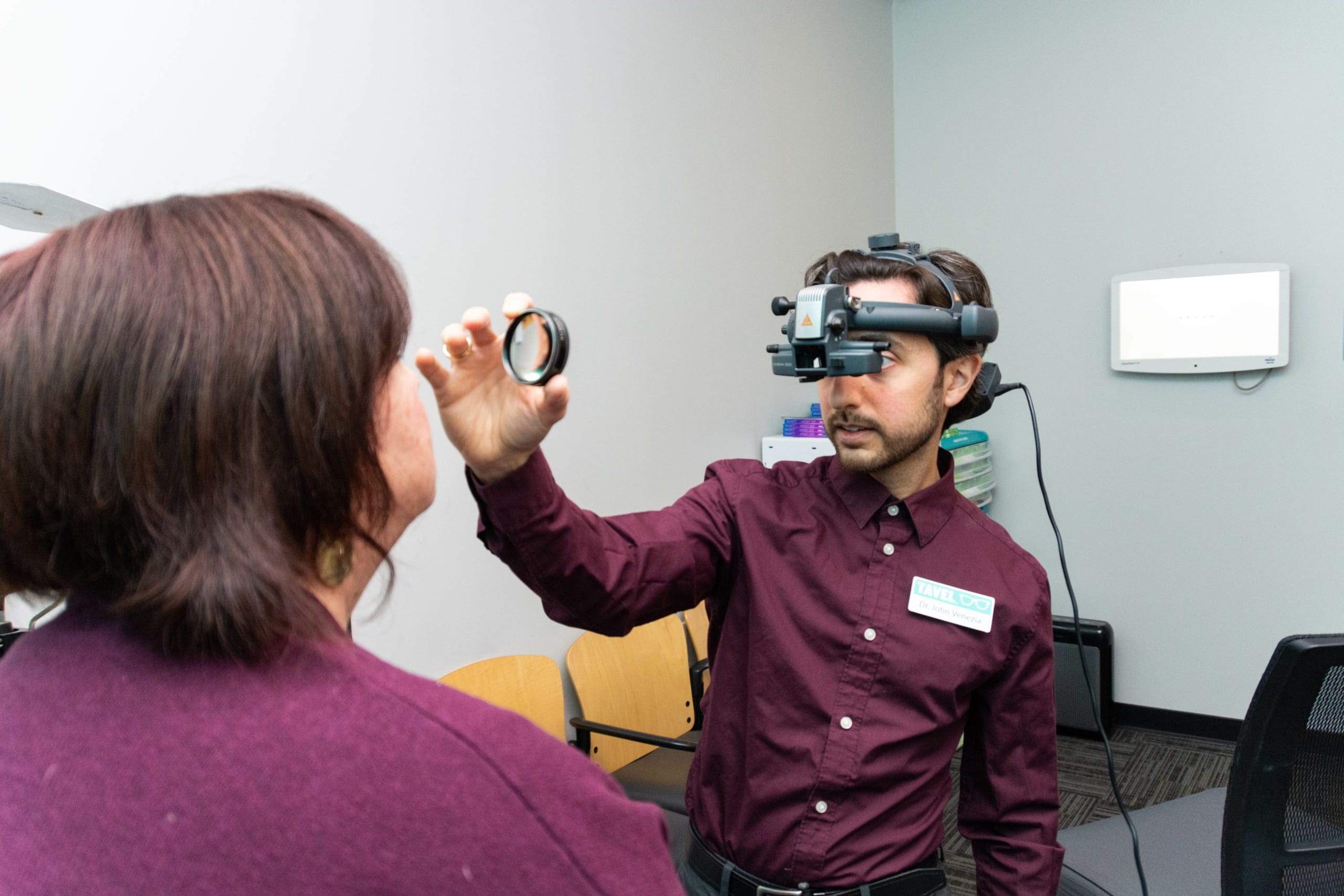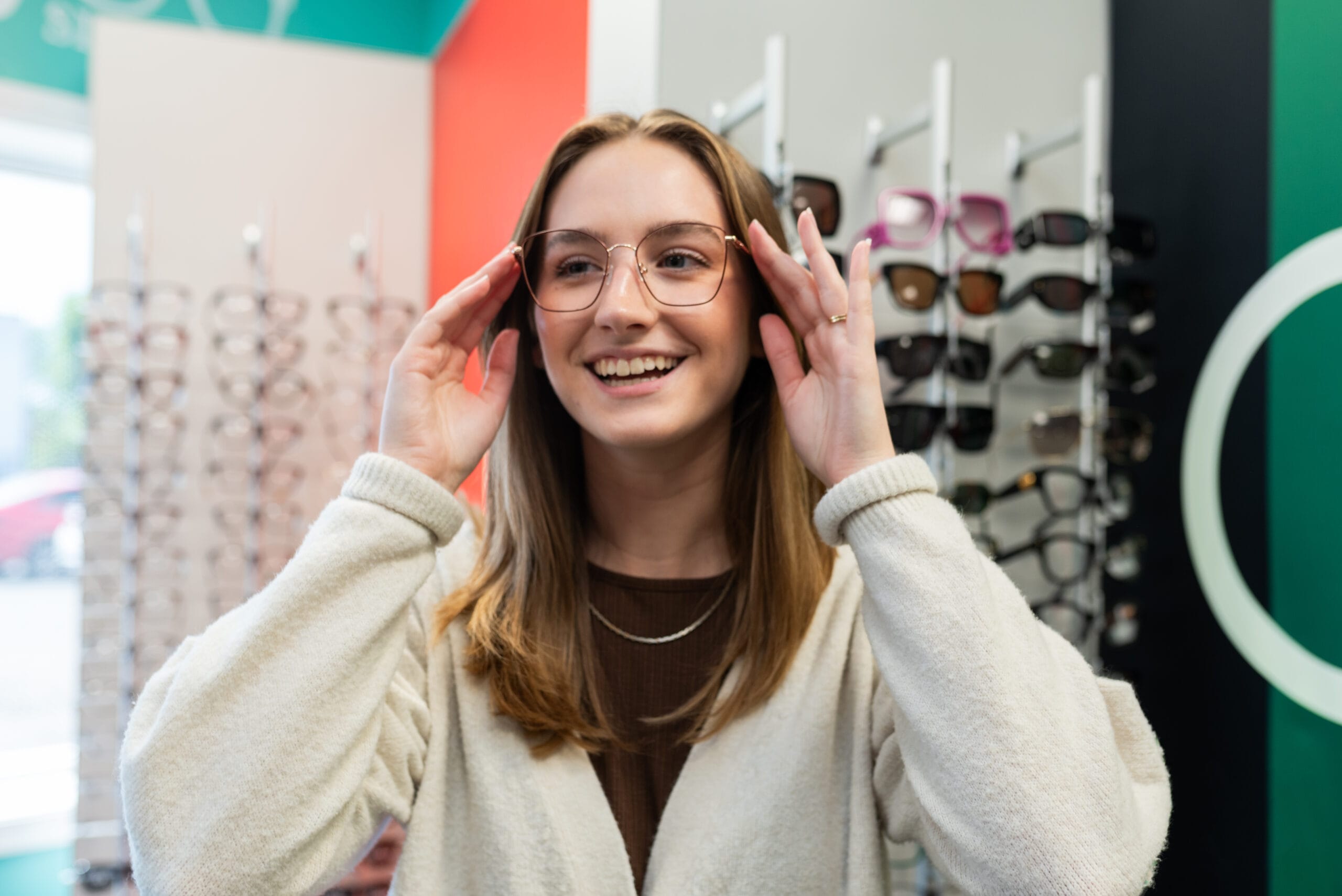Low vision is a vision problem that makes it hard to do everyday activities and can’t be fixed with glasses, contact lenses, or other treatments like medicine or surgery. Low vision is not the same as needing reading glasses or bifocals, which are a natural result of aging. This condition affects millions of Americans, which most commonly includes older adults.

Symptoms of vision loss
You may have low vision if you struggle with:
- Recognizing faces
- Getting around familiar places
- Reading mail or menus
- Shopping
- Cooking
- Telling colors apart
- Having problems with glare
According to the CDC, an estimated 93 million adults in the United States are at high risk for substantial vision loss, but only half have visited an eye doctor in the past 12 months. The most common causes of low vision are age-related macular degeneration (AMD), glaucoma, cataracts, and diabetic retinopathy, all of which can be diagnosed early during a comprehensive eye exam. However, people can also be born with conditions that affect their sight.
Common Causes of Low Vision
- Eye disease
- Birth defects
- Eye injuries
If you think you have low vision, see your eye care professional. Your eye doctor can check for low vision as part of a dilated eye exam. Unfortunately, low vision is usually permanent, but some visual aids can help you do everyday activities, or keep your remaining vision from worsening.
What Are the Types of Low Vision?
Low vision encompasses different degrees of sight loss, including blind spots, vision loss in one eye, or an almost complete loss of sight. The most common types include:
Loss of central vision
Common symptoms include seeing one or more dark or blurry spots in their main field of vision. Typically, this is caused by damage to the macula, a small area in the middle of the retina that provides sharp, clear central vision.
Loss of peripheral vision
Side vision loss involves gaps in peripheral vision. People with peripheral vision loss can still see directly in front of them, but struggle to see on either side or above or below eye level.
Night blindness
Night blindness is the inability to see clearly at night or in poor lighting such as in a restaurant or movie theater.
Blurred vision
Objects both near and far appear out of focus, even with glasses. Blurred vision treatment varies based on the eye condition.
Hazy vision
A hazy or clouded vision seems like looking into a haze or fog. Colors may also look muted or faded.
Vision Aids
If your vision loss is minor, there are a few ways to help you navigate daily activities:
- Use brighter lights at home or work
- Wear anti-glare sunglasses
- Use a magnifying lens for reading and other up-close activities
- Use other vision aids
Vision Specialists
Additionally, ask your optometrist about any low-vision treatments that could help protect your remaining vision. In many cases, your eye doctor at Dr. Tavel will refer you to a vision rehabilitation specialist or clinic in Indiana that will give you the tools to continue to live independently.
If you have any questions about your vision, please call us at 844-GO-TAVEL.
